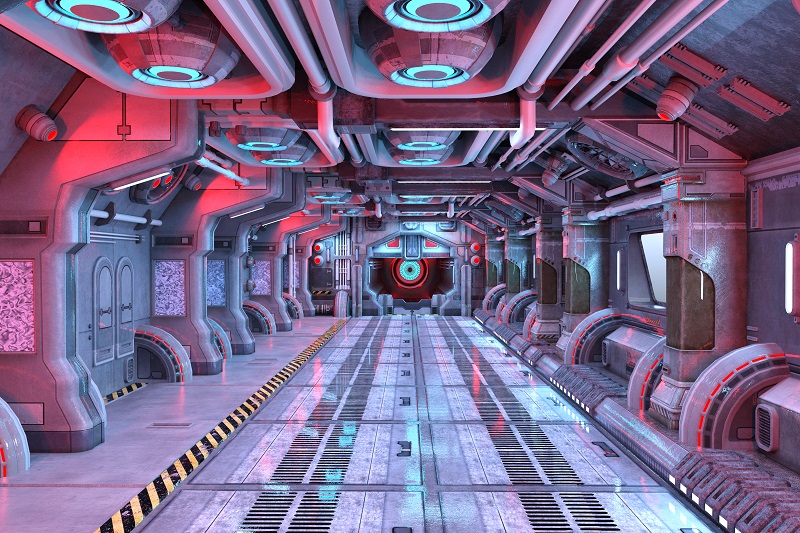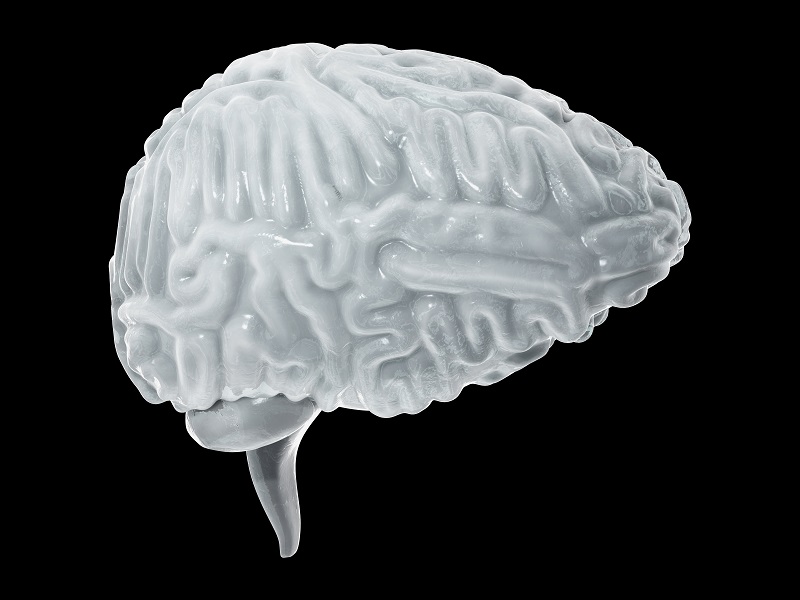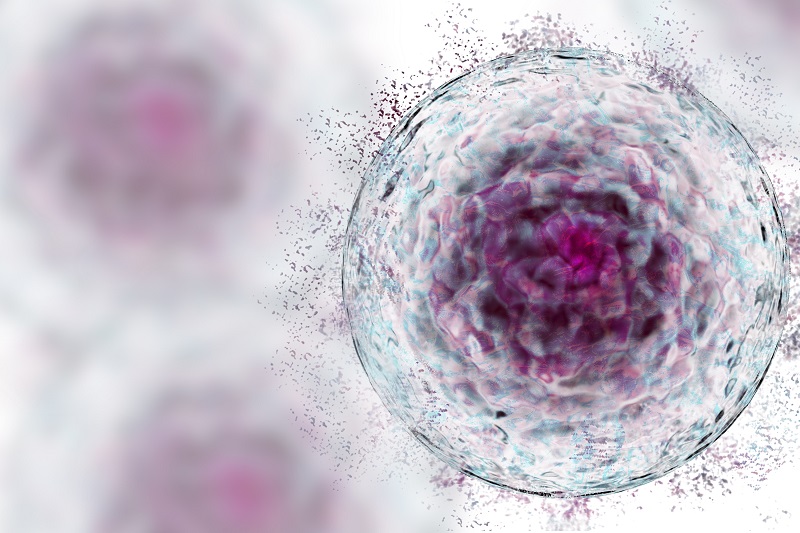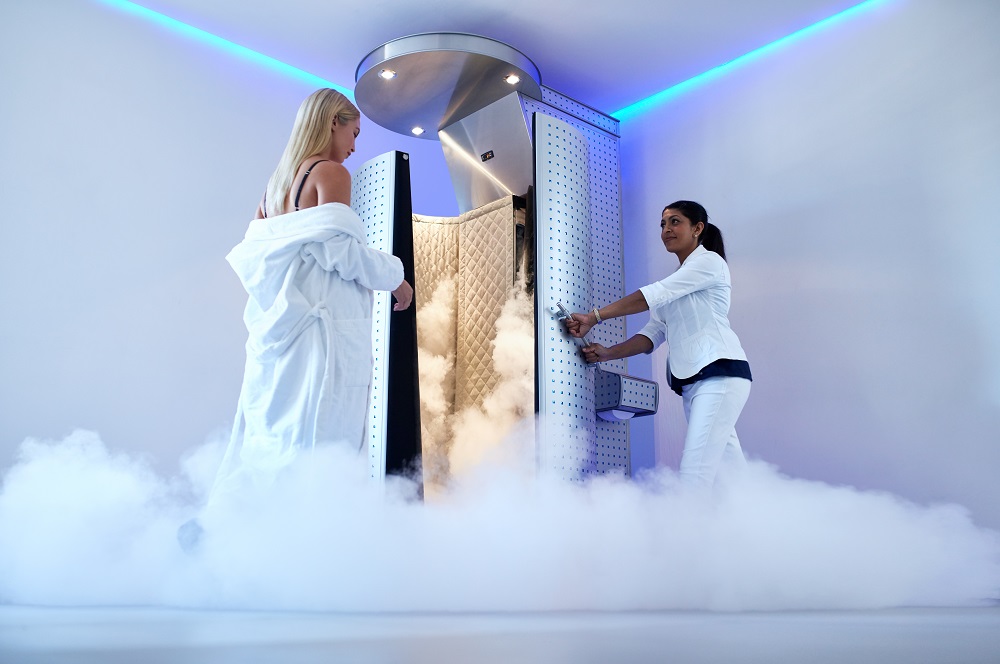Company Plans to Freeze Your Body Before Death
Summary: Cryonics firm CryoGen makes a radical new proposal to freeze people before death, known as ‘mercy freezing.’ Customers will pay for the cryopreservation using a new blockchain based cryptocurrency called the CRYO. [Author: Brady Hartman. This article first appeared on LongevityFacts.]
Cryonics is legally allowed only after death, and during this time the body starts to decay. Cryopreservation should ideally be performed within a few minutes of the patient’s demise. This happens less than half the time for current cryonics clients, and their tissues start turning to mush before freezing.
A Russian-Swiss company named CryoGen plans to solve that problem by freezing people before death, calling it ‘mercy freezing.’ CryoGen is building a cryonics lab in Switzerland, a country where euthanasia is legal. According to a white paper on CryoGen’s website,
“Switzerland is situated in the centre of Europe and has no prohibition on euthanasia, thus making possible the best quality cryonics services at the moment.“
If the cryonics startup hopeful manages to fund their ambitions, they plan to buy a bunker in the Swiss Alps and convert it to a cryopreservation and cryonics storage facility. Terminally ill customers would fly in from around the world to be cryopreserved – a procedure in which patients are frozen in liquid nitrogen. These patients do so with the hope of being reanimated at some time in the future when science finds a cure for their fatal disease. Unlike the practice at other cryonics firms, CryoGen’s terminally ill clients will be cryopreserved before their death, a concept CryoGen refers to as ‘mercy freezing.’
Paying for Cryonics With Cryptocurrency
How would customers pay for their cryopreservation?
Perhaps with Russian rubles? … Nyet.
Or, with Swiss Francs? … Nein.
Instead, according to the cryonic firm’s white paper, customers will pay for services using a new cryptocurrency called the CRYO, based on blockchain technology. The unit of currency in this new CRYO-economy is the Cryotoken, each valued at one U.S. Dollar. As CryoGen’s whitepaper says,
“Payments for some cryonics services, digitization services, science shares for participation in research or purchases on cryonics market will be possible only with tokens.”
To kickstart the project, CryoGen is selling Cryotokens at a pre-offering discount of 30%. CryoGen plans to restrict the issuance of tokens “based on amount of raised funds during PRE-ICO and ICO stages,” adding later on, “The number of tokens is limited. No further token will be issued.”

CryoGen’s Cryopreservation Services
Customers may redeem Cryotokens to purchase full body cryopreservation (36,000 CRYO), neuropreservation (cryopreservation of only the head) – (18,000 CRYO), transportation (3,000 – 10,000 CRYO), and standby services (50,000 -100,000 CRYO). In addition to cryopreserving humans, CryoGen proposes to offer other services which it prices as follows: DNA cryopreservation (1,000 CRYO), and animal cryopreservation (10,000 – 36,000 CRYO).
CryoGen’s white paper contains many caveats, however, implying that there is no guarantee you will be able to purchase cryopreservation services with your Cryotokens. Neither is there a guarantee that prices will stay the same, should there be a spate of CRYO-inflation. In fact, CryoGen plans to spend the proceeds on cryonics research and facility construction first and then cryopreservation of clients later. As CryoGen puts it,
“The nonprofit Swiss organization CryoGen has an agreement with KrioRus LLC that CryoGen pays out ICO-reserved funds on behalf of Cryotoken bearers for cryogenic storage in a facility in Switzerland, and performs research towards reversible freezing for Cryotokens bearers.”

Problems with Cryopreservation
CryoGen’s novel concept of ‘mercy freezing’ solves a lot of problems in the cryonics process. Cryopreservation should be performed within a few minutes of death, and this happens less than half the time, due to delays at the hospital where the patient died. Cryonics industry leader Alcor reports that
“In more than 50 percent of cryonics cases legal death occurs before Alcor standby personnel can be deployed, and is often followed by hours of warm ischemia. This downtime may cause severe cellular damage.“
May cause severe cellular damage?
Alcor is putting it way too mildly. Even with the best medical nanorobots of the future, a body left dead for several hours is beyond recovery.
Medical science has a great many interventions to revive a dying person, such as the defibrillator. However, its ability to shock a person back to life declines rapidly after a cardiac arrest. Within minutes, the muscle cells of the heart, deprived of oxygen-rich blood, start dying. Once they do, no amount of defibrillation will get them working again. As soon as the heart stops beating, heart muscle cells start dying. The more that die, the less the chance of getting the heart started again.
The problem of a dead heart, however, is minor compared to that of a dead brain. The brain is extremely sensitive to interruptions in blood flow. For example, during a heart attack, as soon as the blood flow stops, the brain starts losing cells. It only takes a few minutes before severe and permanent brain damage occurs, eventually leading to brain death. Sadly, many times heart attack patients have been resuscitated, only to have severe brain injury due to lack of oxygen or be brain dead.
In 2015, scientists successfully restored the memories in a worm’s brain after cryopreservation. However, the human brain is far larger and far more complex. If the brain could be frozen in pristine condition and without ice crystals, the information might still be there. That’s not even counting fixing the physical damage to the brain from the lack of oxygen that occurs after the cessation of blood flow and the freezing process itself, given the number of connections between the many billions of neurons in a human brain.
CryoGen’s All-Star Cryonics Lineup
CryoGen is the brainchild of the Russian cryonics firm KrioRus, whose principals include Valeria Udalova, Yuri Pichugin, and Igor Artyukhov. All three are specialists in the field of cryonics and cryopreservation, and not surprisingly, all three are also transhumanists.
Valeria Udalova is the CEO and Co-founder and of KrioRus, a position she has held for eight years. Udalova is a popularizer of cryonics and participated in both the start and growth of the cryonics field in Russia.
Yuri Pichugin, Ph.D. is the Director of Science for KrioRus. Dr. Pichugin has been perfecting cryonics technology for 40 years and has written more than 80 scientific papers on the subjects of cryopreservation and cryonics. The cryobiologist also created vitrification technology – an essential component of modern cryonics – for the American cryopreservation firm, the Cryonics Institute.
Igor Artyukhov is the Research and Development Director and Co-founder of KrioRus. Igor is a biophysicist, cryobiologist, futurist and active evangelist of nanotechnology, cryonics and other futuristic technologies. In 2003, Igor performed the cryopreservation of the very first Russian cryonics patient. He is the author of many papers related to cryopreservation and cryobiology and has designed special devices for cryonics.
To perform the cryopreservation procedure, CryoGen is enlisting the services of Dr. Yuri Matveev, a Surgeon, and Perfusionist with experience in cryonics. Dr. Matveev has invented new methods of perfusion and various devices for cryopreservation. Dr. Matveev has performed numerous cryopreservations of humans and animals and trains new cryonics specialists.
Does Cryopreservation Work?
Any cryonics firm can freeze your body, but can they successfully resurrect you?
The short answer is ‘no.’ There is little scientific proof to support the theory of reanimation and most mainstream physicians, and scientists are highly skeptical of the cryonics field. There are no known cases of successful resuscitation of cryopreserved patients.
Cryonics companies are quick to state that they do not guarantee a successful outcome. For example, CryoGen wants to perform research to correct known shortcomings in cryopreservation technology, especially the current inability to properly freeze brain tissue. As the CryoGen whitepaper states,
“We are sure that today achievements in neuronal cryobiology and cryogenic and medical technology will make possible to gain a 100% survival rate of brain cells. However, these achievements are now ahead of the modern imperfect state of the cryonics technologies.”
Cryonics companies offer hope, rather than a guarantee. As Cryogen’s white paper states,
“However, only cryonics can give a chance for physical immortality. We do not want to embellish anything: we are talking about the chance as a probable opportunity and not as a guarantee.”
Given the shortcomings in current cryopreservation technology, cryonics companies are betting on advancements in reanimation technology, especially molecular engineering, and medical nanorobots, called nanodocs. As the whitepaper states,
“Although modern cryobiology is still on the verge of a successful cryopreservation of organs of people and animals, it does not affect negatively the possibility of restoring frozen bodies of people, because the chances of repairing all damage with the help of molecular engineering in the future are high (one of the options). At least, the leading experts in the field of nanotechnology, Eric Drexler, Marvin Minsky, Ralph Merkle, are confident of this and have signed up for the cryopreservation.“
The implication is that nanotechnology experts are confident on the role of nanorobots in the future of medicine. However, it’s a far stetch of the imagination to see a nanorobot cleaning up the damage from today’s level of cryopreservation technology.
Hooked on Cryonics
Cryonics is a growing industry that began in the 1970s, with the founding of industry pioneers, Alcor Life Extension Foundation and the Cryonics Institute (CI). KrioRus started 11 years ago as the only cryonics provider in Europe with an on-site cryonics repository, a position it still holds today. CI is a member-owned-and-operated cryonics firm located in Clinton Township, Michigan, and Alcor is located in Scottsdale.
Journalists call KrioRus the Lada of the cryonics world when comparing the firm to their chief competitor, Alcor who is characterized as the Mercedes-Benz of cryopreservation.
Alcor is the leading cryonics company and conducts tours of its premises twice a week, demonstrating the operating room as well as long-term cryopatient storage facilities, where they can be viewed through bulletproof glass. Two famous futurists, Aubrey de Grey and Ray Kurzweil, are both members of Alcor.
KrioRus, the controlling company of CryoGen, does not offer any such services, and their facilities are far less polished. No bulletproof glass. KrioRus hopes to change all that with the new cryonics facility in Switzerland.
How CryoGen Plans to Spend the CRYOS
The funds collected by the startup firm will go for a whole more than freezing customer’s bodies. CryoGen plans to invest in cryonics research and facility construction first and then cryopreservation of clients later.
Starting sometime next year, CryoGen plans to start the renovation of an abandoned Swiss bunker as a cryonics storage center, building a facility to perform the cryopreservation process on clients, and the development of at least one other cryonics facility in Russia.
That is, assuming that the cryonics firm has enough CRYOS in the bank.
Furthermore, CryoGen plans to spend even more CRYOS renovating a palliative care center, opening sometime in 2019, that will serve terminally ill customers, “with cryonics services, pre-cryo hospice palliative care centre and cryobiological laboratories.”
Moreover, some of your hard earned CRYOS will go towards the funding of a “mass-scale PR company in Russia and Eurasia, for the build-up to the occasion of the opening of a large cryonics centre in Russia offering the highest quality cryonics.”
Some experiments using nanoparticles as a cryoprotectant have shown promise and CryoGen plans to take a few more CRYOS out of the cryobanking account to perfect the nanoparticle perfusion technology. They plan to take small steps, seeing if the nanoparticle technique can successfully cryopreserve and then later reanimate larger and larger tissues.
Tiny steps are better when it comes to nanotechnology.
In 2019 the cryonics firm plans to spend even more CRYOS on “massive R&D on reversible cryopreservation of animal organs under nanoparticle perfusion, plus other related experiments.” If all goes to according to plan, the construction of the Swiss cryonics storage facility should be complete, and full-scale cryopreservation services will begin.
Apparently, CryoGen hasn’t worked out all the legalities yet, as their white paper says, “The Swiss cryonics storage facility will become the centre of European cryonics, and cryonics legislation will advance in Switzerland.” The startup adds that the “commercial euthanasia technology for ‘mercy freezing’ will be refined and applied.”
The startup plans to invest even more CRYOS in a dewar manufacturing facility to meet booming worldwide demand. If you are a cryonics client, dewars are the human-sized thermos flasks used to store your cryopreserved body and will be your home for the next hundred years or so.
Not content to stick to cryonics research, CryoGen plans to start an anti-aging center. Hopefully, this will not deplete the cryobanking account, as the firm plans to fund it with grants. CryoGen hopes that clients of the anti-aging center will eventually contract as cryonics patients. Of course, if the anti-aging center does a good enough job, then its clients will never have to make use of the firm’s cryopreservation services.
If things go right, in the year 2020 CryoGen will achieve the milestone of “Reliable and safe reversible cryopreservation of the first organ of a large animal such as a pig.” In 2021, the cryobiologists plan to begin experiments of the improved cryopreservation technology on donated human organs. 2022 will be the year in which “The technology of reversible cryopreservation of the first human organ will be obtained.”
The CryoGen forecast stops at the year 2022. For a long-term company, the startup has a short-term forecast.

Improving Cryopreservation Technology
The firm plans to invest in the perfection of cryopreservation technologies, a sorely needed investment if the plan is to succeed. Cryopreservation technologies have come a long way, in part due to the work of Dr. Greg Fahy, an innovator in the fields of both cryopreservation and restoring thymus function. Despite the advances made by Dr. Fahy and others, current cryopreservation technologies damage far too many cells and rely on miraculous advancements to clean up the mess.
For decades now, the field of cryonics has had limited support from mainstream science. At the end of the 1970’s, the field of cryobiology – the study of the cryopreservation of tissues- separated itself emphatically from the cryonics crowd. In fact, the mainstream Society for Cryobiology actively discourages its members from doing work that could advance cryonics and threatens to expel anyone who practices or promotes the cryopreservation of humans. This prohibition has greatly dampened the enthusiasm for cryonics-related research, as cryonics researchers run the risk of being excluded from the field of cryobiology – the scientific specialty that is most relevant to their work.
Stretching the Cryonics Budget
The CryoGen proposal makes it clear that investors’ CRYOS will be paying for a lot more than just the cryopreservation of their bodies.
In their whitepaper, CryoGen spoke little about the cryopreservation of customers. Instead, the would-be cryonics startup focused on their plans to invest a fistful of CRYOS on a capital program, to build cryonics facilities in multiple countries and advancing cryopreservation research.
Given enough CRYOS, all of this is possible, but it seems that CryoGen is overreaching with their plans to build an additional cryonics storage facility in Russia, being redundant with the one in Switzerland.
Could this be because one can get more for their CRYOS in Russia?
The plans for a dewars manufacturing facility are premature. There will be no need to ramp up dewars production until the firm can demonstrate successful cryopreservation and reanimation.
Moreover, why does a cryonics firm need an anti-aging center? To be successful, a company should focus on one technology – that which it does best.
Except of course, for Elon Musk.
It’s an expensive bet with long odds. There’s no doubt that cryopreservation technology has significantly improved. And if CryoGen gets their way, we can expect the technology to improve a whole lot more.
How Far Will Your CRYOS Go?
In the past, cryonics companies have not always been capable of fulfilling their contractual obligations. While other cryopreservation firms put their future operations expenses in trust funds – an idea not mentioned in CryoGen’s proposal – how long can these trust funds last? Can the trust funds survive taxation authorities, currency collapses, legislative changes, and changes in government?
Show Us Some Love
- One click helps us spread the word – Share this post on social media and help us spread the word. It only takes a click on any of the social media links on this page.
- Follow us on social media – For more articles, follow us on Google+ | Facebook | Reddit
- Sign up for our email list – We use your email to notify you of new articles. We will not send you spam, and we will not share your email address. You can cancel at any time.
- Tell us what you think of cryopreservation – Scroll down to enter your comments below.
Disclaimer
Diagnosis, Treatment, and Advice: This article is intended for educational and informational purposes only and is not a substitute for qualified, professional medical advice. The information and opinions provided herein should not be used during any medical emergency or for the diagnosis or treatment of any medical condition. Experimental therapies carry a much higher risk than FDA-approved ones. Consult a licensed and qualified physician for the diagnosis and treatment of any and all medical conditions. Call 911, or an equivalent emergency hotline number, for all medical emergencies. As well, consult a licensed, qualified physician before changing your diet, supplement or exercise programs. Photos, Endorsements, & External Links: This article is not intended to endorse organizations, companies, or their products. Links to external websites, mention or depiction of company names or brands, are intended for illustration only and do not constitute endorsements.

My wife & I were 8 years with Alcor and we switched for the Cryonics Institute, the Cryonics Organization with the largest number of members and whole body cryopreserved patient in the World for many serious reasons.